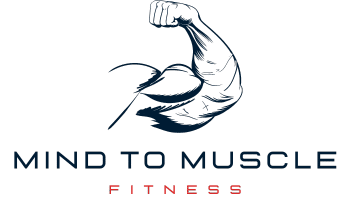
Lean Bulking: My Guide to Smart Muscle Gain
I’ve hacked the code to lean bulking — that method where you put on muscle like a champ without stacking fat like it’s winter. My secret? It’s about hitting that sweet spot of caloric surplus, nailing the right macros, and yes, pounding the weights hard and smart. Through my trials, I’ll guide you with proven lean bulking tips, my own impressive lean bulking results, and even chat about the lean bulking supplements that give me an edge.
Staying on point with a meal plan that’s clean as a whistle is key, and I’m big on keeping foods whole and nutrient-dense. You won’t catch me preaching quick fixes, because let’s be real, transformation takes more than just talk. I commit to a cycle of 4-6 months of bulking, then tightening things up with 3-4 months of cutting to keep that muscle defined and fat on the low.
Sure, my ways might not be your grandma’s bulking advice, but if you’re aiming for a physique that’s both strong and sleek, stick around. I’ve outlined my routine to build muscle effectively and sustainably. Enough talk — let’s dive in and get those gains!
Key Takeaways
- Start with a caloric surplus in your diet to prime your muscles for growth.
- Balance your macros smartly for sustained energy and muscle repair.
- Choose whole, nutrient-rich foods to get the most out of your bulking phase.
- Incorporate a solid lean bulking workout routine that includes progressive overload.
- Don’t ignore the impact of lean bulking supplements, they can push your results further.
- Stay consistent for 4-6 months to see significant lean bulking results.
Demystifying Lean Bulking for Smart Muscle Growth
As someone who’s carved out muscle with precision, I can tell you that lean bulking flicks the switch on muscle growth without that unwanted fat gain. How? By steering clear of the random excesses of a ‘dirty bulk’, you feed your gains with a clean bulking diet. It’s like adding precision fuel to your muscle machine.
Here’s the secret sauce: it’s not just about stacking calories; it’s about choosing the right lean bulking foods. That means those extra calories come from foods that max out on nutrients but don’t pack on the pounds. It’s what keeps you looking jacked yet razor-sharp, chiseling out gains without the fluff.
- What’s off the table? Random, calorie-dense junk. Instead, think chicken breast, not chicken wings.
- What’s on the blueprint? Muscles need work to grow, and that’s where progressive overload slams in. More weight, more reps; it’s about upping the ante each time you hit the gym.
- How do we cut out the fat gain? By fine-tuning calories just enough to support growth, not comfort.
Hold on, though. A clean bulk doesn’t mean shunning fats — your body needs them. But we’re sidestepping greasy fries for heart-friendly avocados and almonds. In all, it’s the synergy of smart eating and hard training that primes us for peak muscle development.
The Role of Nutrition in Effective Lean Bulking
As your muscle-sculpting guide, I can’t stress enough the power of nutrition in a successful lean bulking journey. To pack on quality muscle, you need a tactical approach to eating—this isn’t just about more food, it’s about more of the right food.
Caloric Surplus: The Gateway to Muscle Growth
I’ve found that a calculated caloric surplus is critical for amplifying muscle gains. It’s simple: consume more calories than you burn. Yet make no mistake, the surplus must be controlled—aiming for an increase of 250-500 calories above your TDEE paves the way for growth without excess fat.
Macro Mastery: Protein, Carbs, and Fats
Here’s where the precision comes in—the art of lean bulking macros. Matching your calorie intake with just the right balance of macros is where many falter, but not us. We use the “4-4-9 Rule” to distribute our calorie sources, guaranteeing that protein, carbs, and fats are in harmony to fuel our workouts and muscle recovery efficiently.
Clean Bulking Diet Staples
Quality muscle needs quality fuel, and that’s why my lean bulking meal plan is built around complex carbs, healthy fats, and lean protein sources. The goal is not just gaining mass, it’s about nutrient absorption and bolstering those gains with foods that work as hard as you do in the gym.
Think of each meal as a deposit into your muscle bank—an investment that yields returns in strength and size. That’s the payoff of clean, strategic eating during a bulk.
| Macronutrient | Role in Muscle Building | Quality Sources |
|---|---|---|
| Protein | Muscle repair and growth | Chicken breast, white fish, low-fat Greek yogurt |
| Carbs | Energy and glycogen replenishment | Quinoa, brown rice, sweet potatoes |
| Fats | Nutrient absorption and satiety | Avocados, nuts, olive oil |
By centering our diet on these cornerstones, we can optimize our workouts for effective results. And when it comes to muscle recovery, these nutrients ensure we’re ready to power through our next lean bulking workout routine.

Designing Your Lean Bulking Workout Routine
As I deeply immerse myself in lean bulking, I’ve crafted my workout program to revolve around the principle of progressive overload. It’s been a game-changer for both me and my clients, ensuring our muscles face enough challenge to grow without the risk of unnecessary fat gain. Let me break down the essentials for you.
Progressive overload means methodically ramping up the intensity of each session. This isn’t about hulking out with weights you can’t handle; it’s the art of increasing reps or stacking on a little more weight over time, responsibly. So if I’m bench pressing 200 pounds this week, I’ll aim for 205 next week, or squeeze in an extra rep – that’s how we roll!
But it’s not just about going heavier; our focus during this lean bulk is also on compound lifts. They’re the show-stoppers in building foundational strength and size. I’m talking squats, I’m talking deadlifts, bench presses – these lifts that recruit multiple muscle groups and set the stage for impressive muscle gains.
Here’s a quick table that outlines a typical week in my lean bulking workout schedule:
| Day | Workout Focus | Key Compound Movement |
|---|---|---|
| Monday | Chest & Triceps | Bench Press |
| Wednesday | Legs & Core | Squats |
| Friday | Back & Biceps | Deadlifts |
Don’t worry if you can’t commit to a split workout five days a week; a total body workout routine fits snugly into a tight schedule and can be just as effective. Consistency is key, and I always remind myself that the best workout is the one that actually happens!
Nailing your workout routine isn’t just great for bulking, but it’s monumental for elevating your overall health and strength. Remember, whether you’re choosing a focused split or a total body approach, incorporating progressive overload and compound lifts makes all the difference in your muscle gains.

Lean Bulking Macros: A Personalized Approach
Let’s get down to the nitty-gritty of lean bulking — tailoring your diet for optimal muscle gain without excess fat. It’s not just about what you eat; it’s how much. A personalized approach to bulking macros is the cornerstone of muscular development. It starts with getting to know your energy needs and sculpting your diet to fit.
My mantra is simple: no two bodies are the same; therefore, no two bulking diets should be identical. This means digging into the fundamental aspects of your basal metabolic rate and total daily energy expenditure. As a personal trainer, I’m here to guide you through that process.
Calculating Your Unique Caloric Needs
Forget one-size-fits-all diets. For muscle gains that turn heads and keep fat at bay, your first step is to decipher your TDEE. Why? Because every lift, every sprint, every day at work, they all burn calories, and you need to fuel properly for those activities and your gains. By adding 250 to 500 calories more than what you burn daily, you’re setting yourself up for success.
Adjusting Macros for Lean Bulking Success
Once your caloric baseline is established, it’s all about macro-counting for caloric surplus consistency. I’m not just any gym bro; my approach to a higher carb diet and healthy fats is specific. It’s tailored to your responses, to your energy expenditure. This way, we aren’t guestimating; we’re cultivating the perfect bulking environment — one that understands and respects the harmony between protein, carbs, and fats.
| Macronutrient | Calories to Add | Reason for Adjustment |
|---|---|---|
| Protein | +250 to 500 | To support muscle repair and growth |
| Carbs | Depends on workout intensity | For replenishing glycogen and fueling workouts |
| Fats | Adjusted based on dietary response | For hormonal balance and nutrient absorption |
Now, how do we know if we’re hitting the mark? Simple: watch how your body responds. Feeling sluggish? Maybe it’s time to bump up those carbs. Struggling still to put on size? Maybe a slight uptick in overall calories is due. Your journey to personalized bulking macros is much more than science; it’s an art form — a dynamically adjusted canvas of carbs, fats, and protein that’s just as unique as you are.
Essential Lean Bulking Foods and Meal-Prep Tips
When it comes to fueling my lean bulk, each meal is a strategic step towards muscle growth. Achieving the right balance of lean bulking foods is key to forging those lean gains while keeping body fat in check. Let’s dive into the foods that make up the core of my lean bulking diet.
Incorporating Lean Proteins and Complex Carbs
My go-to for muscle protein synthesis is lean protein. I’m talking about quality choices like chicken, fish, and egg whites — the heroes for repairing and building muscle tissue. And we can’t forget complex carbs; oats and sweet potatoes are my picks to fuel those intense workouts and keep my glycogen stores topped up. These nutrient-dense options don’t just load you with quality calories — they also keep you full and energized for longer, helping to avoid unnecessary snacking.
Meal Timing and Frequency for Maximum Gains
The when and how often of eating are just as critical as the what. For me, small frequent meals throughout the day keep the engine running at full throttle. This approach aids in nutrient timing that aligns with my training sessions, helping to maximize muscle protein synthesis. And when it comes to prepping these meals, I’m all about efficiency. Meal prepping on the regular means I’m never caught off-guard and always ready to feed my muscles exactly what they need, when they need it.
Now let me lay it out for you. Here’s a table of my typical lean bulking day — check out how I pair up my proteins and carbs to keep the gains coming.
| Meal Time | Lean Protein Source | Complex Carb Source |
|---|---|---|
| Breakfast | Egg Whites | Oats |
| Mid-Morning Snack | Almonds | Apple |
| Lunch | Grilled Chicken Breast | Quinoa Salad |
| Afternoon Snack | Greek Yogurt | Berries |
| Dinner | Broiled Fish | Sweet Potato |
| Evening Snack | Cottage Cheese | Whole Grain Crackers |
Whether you’re a fellow hardgainer or just looking to lean bulk without the fluff, keep these foods and tips in mind. They’ve been a game-changer for me and I’m confident they can make a difference in your muscle-building journey too.
Supplementing Smartly During a Lean Bulk
When we talk lean bulking, we’ve got to chat about giving our bodies a little something extra. Sure, a stellar diet is key, but sometimes, it needs a boost. That’s where strategic supplementation steps in. I’m all about keeping it clean and making sure every single thing we put in our bodies is there to work hard for us.
Take protein supplements, for instance. Throwing a scoop of whey powder in your post-workout shake is like adding high-octane fuel to your muscle-building engine. It’s easy, it’s efficient, and it delivers exactly what your muscles are screaming for after you’ve torn them up with a killer session. But hey, it’s not just about gulping down the protein and hoping for the best.
Only a pro knows how to weave these supplements into a diet that’s perfect for bulking. I’m talking about a legit nutritionist — someone who’s done the grind and got their nutritionist certification. They’re the ones who can tell you how to use protein supplements without overdoing it, fitting them into a meal plan that’s tailor-made for your lean bulk goals.

Educate Yourself
And if you’re looking to get real savvy with your supplements, you might even consider getting some education yourself. Plenty of fellow lifters I know leveled up their game by getting a nutritionist certification. It gives you the inside scoop on exactly what your body needs, when it needs it, and how much of it will give you that edge without tipping you over into a surplus you can’t handle.
So, if we’re gonna bulk up the smart way, we can’t just eat and lift. We’ve gotta think, plan, and supplement like we mean business. Always remember, consult a certified nutritionist before starting any supplement regimen, and consider adding that certification to your own arsenal if you’re serious about mastering the art of lean bulking.
Real-World Lean Bulking Tips and Tricks
In my journey as a personal trainer, I’ve learned that lean bulking is as much science as it is art. Mass gainer supplements, I’ve found, can be a straightforward solution for those who struggle with getting enough nutrients for growth. These are especially practical for my clients who might not have the time for macro tracking. Yet, it’s essential to keep them balanced within a planned diet to avoid unnecessary fat accumulation.
Those hours in the weight room are non-negotiable. Weight room exercises are foundational for muscle-building—a fact every gym-goer agrees with. It’s about pushing the iron with intention, ensuring progress is both seen and felt. But remember, it isn’t about lifting as much as you can, right off the bat. It’s about that gradual progression, which brings us to the power of trial and error.
- Gaining muscle is a test—adjust meal sizes, try different macros, and find what works uniquely for you.
- Track, measure, and reassess regularly to tailor your regimen based on your body’s response.
- Remember, the scale and the mirror often tell different stories—seek progress in strength, not just weight.
To help you visualize the impact of monitoring and adapting, here’s a table that reflects how I’ve tweaked regimens for better results:
| Adjustment | Benefit |
|---|---|
| Increase in Protein | Enhanced Muscle Recovery |
| Altered Meal Frequency | Better Nutrient Absorption and Metabolism |
| Carb Intake Post-Workout | Improved Muscle Glycogen Replenishment |
Finally, it’s the dedicated review and refinement of your plan that’ll make your bulk lean and effective. Adopt a growth mindset, and don’t shy away from recalculating your caloric needs as you progress. Your lean bulk victory lies in that sweet spot of empirical knowledge and disciplined execution.
Conclusion: Advancing Towards Your Lean Bulking Transformation
Embracing a fitness lifestyle packed with dedication is what lean bulking is all about. It’s a pathway that demands consistent attention to diet, unfailing strength training, and smart use of supplements. The journey is steeped in gradual progress — tracking muscle measurements is as crucial as tuning into the body’s cues. Both play a vital role in ensuring lean muscle gains.
My aim has been to guide you through this meticulous process, offering strategies that blend purposeful eating with targeted workouts. I’ve shared insights to feed not just muscle, but ambition — fueling a transformation that transcends the gym. It’s about building a body that’s as strong as the willpower that shapes it.
By now, you should be well-equipped with the tools for a successful lean bulk. Remember, those muscle measurements, that keen focus on lean muscle gains, and an unwavering commitment to your fitness lifestyle — they’re your compass on this journey. Let’s keep those gains clean, consistent, and impressive — that’s what sets apart a true transformation!
FAQ
What are some lean bulking tips to get started?
Begin with calculating your caloric surplus needs, focus on a balanced macro ratio, and follow a consistent workout program that incorporates progressive overload. Start with compound lifts and measure your progress regularly.
How do I measure lean bulking results?
Track your muscle measurements, strength improvements, and body composition changes over time. Also, pay attention to how your clothes fit and take progress photos for visual reference. Consistency and patience are key.
Which lean bulking supplements should I consider?
A high-quality protein powder can support your increased protein requirements. Creatine is widely used to improve performance in the gym. Always consult with a healthcare provider or nutritionist before adding new supplements to your routine.
Can you explain a clean bulking diet?
A clean bulking diet focuses on nutrient-dense foods that promote muscle growth without unnecessary fat gain. This includes lean proteins, complex carbohydrates, and healthy fats. It emphasizes whole foods over processed items.
What are some key lean bulking foods?
Key foods for lean bulking include chicken breast, fish, lean beef, eggs, quinoa, brown rice, sweet potatoes, oats, fruits, vegetables, nuts, seeds, and avocado for their balance of macros and essential nutrients. These options provide the ideal combination of protein, healthy fats, and complex carbohydrates to support muscle growth and repair while keeping fat gain in check. Among the best bulking foods for muscle are those rich in high-quality protein and fiber, which help sustain energy levels and promote recovery after intense workouts. Incorporating a variety of these nutrient-dense choices into your diet ensures that your body gets the vitamins and minerals it needs for optimal performance.
How do I maintain muscle growth and minimize fat gain?
By tracking your macros, maintaining a moderate caloric surplus, and engaging in a strength training routine, you can prioritize muscle growth. Regularly adjust your meal plans and workouts based on your body’s response.
What is a caloric surplus, and why is it important?
A caloric surplus means consuming more calories than you burn, creating the energy needed for muscle growth. It’s essential for lean bulking because it provides your body with additional resources to build and repair muscle tissue.
How do I master my macros for lean bulking?
Determine your protein intake at around 1 gram per pound of body weight, adjust your fat intake between 0.2-0.4 grams per pound, and fill the remaining calories with primarily complex carbs. Use macro tracking apps and adjust based on your progress and energy levels.
What should my lean bulking workout routine include?
Your workout should focus on progressive overload with compound lifts like squats, deadlifts, and bench presses. Include varied exercises that target all major muscle groups for balanced development.
Can you explain the role of TDEE in personalizing bulking macros?
Your Total Daily Energy Expenditure (TDEE) is the number of calories you burn in a day. Understanding your TDEE helps to create a personalized bulking plan by adding the necessary calories to promote muscle gain while keeping fat gain to a minimum.
How do I adjust my macros for optimal lean bulking?
Begin with standard macro ratios and adjust based on your body’s reactions, such as your energy levels and body composition changes. It often requires trial and error to find the perfect balance for your unique physiology.
What is the significance of meal timing and frequency during a lean bulk?
Meal timing and frequency can affect your ability to consume the necessary calories and nutrients for muscle growth. Smaller, more frequent meals may aid digestion and nutrient absorption, while aligning meals with your workout schedule can optimize muscle recovery.
How do I incorporate nutrient timing during a lean bulk?
Nutrient timing involves consuming specific nutrients, especially proteins and carbs, around your workouts to aid muscle recovery and replenish glycogen stores. This can help maximize the effectiveness of your lean bulk.
What are some practical lean bulking tips for real-world application?
Start with basic strategies like simplicity in meal planning, focusing on compound lifts, and progressively increasing workout intensity. Stay adaptable and willing to make changes based on your progress. Consider using supplements like mass gainers if you struggle to meet your calorie goals.
How do I track my muscle measurements and lean muscle gains?
Use a tape measure regularly to record the size of key muscle groups such as your arms, chest, and legs. Also keep an eye on your body fat percentage to ensure that your gains are lean. Track these over the duration of your bulking phase for a clear view of your progress.



